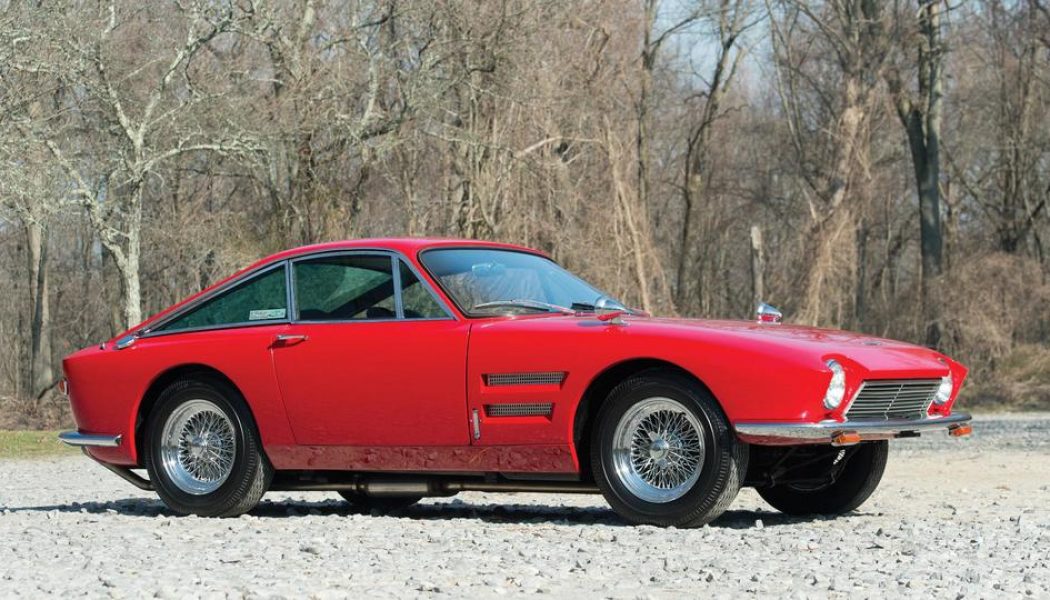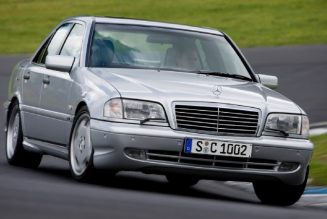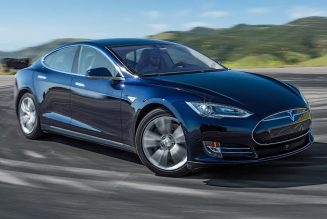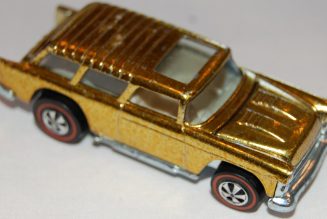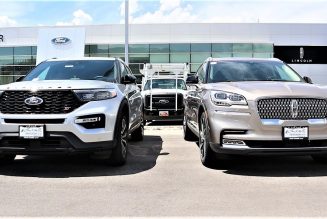Whether you like it or not, you’ve got some free time to spend at home right about now. We’re here to help you make the most of it, so while you sit on the couch munching on that bowl of chips, why not read up on some of the weirder, more esoteric four-wheeled wonders you probably haven’t heard about before?
The word “obscure” holds different weight depending on the person, and in this regard, we picked a few cars we believe our average car-minded reader from the States has likely never seen or read about before. (As distinct from “forgotten” rides that were sold here, such as these ’80s models, or these rad ’90s cars, or these convertibles.) In this weird, wacky world of obscure cars, there seemingly are a zillion one-off prototypes, failed concepts, model variants, and defunct brands we could fill a literal tome with, so here are some cars that occupy the fringe between absolute obscura and a brand or design you might recognize.
1967 Trident Clipper
Sharp looking car, isn’t it? Most sports GTs of this era were, even if they weren’t commercially successful. The handsome Trident Clipper traces its genesis back to one of TVR’s many, many financial rough spots, when in 1965, the struggling British automaker developed aluminum-bodied coupe and roadster GTs for that year’s Geneva auto show. Both were designed by Trevor Frost at Carrozzeria Fissore.
The four TVR Tridents made before the company handed off the design rights remain the only metal-bodied TVRs in the company’s long, turbulent history. In 1966, TVR dealer Bill Last assumed control of the nascent Trident project and launched the namesake company, working with Fissore to source fiberglass bodies for the Austin-Healey 3000 chassis.
Much like the contemporary TVRs, Tridents were fast, knife-edged sports coupes, especially with the 4.7-liter (289 ci) Ford V-8 under their clamshell hoods. Initially, the Clipper was available as a kit or a completed car, and only with the aforementioned V-8. Later, the visually similar Venturer and Tycoon incorporated a Triumph TR6 chassis and utilized a Ford 3.0-liter V-6 (Venturer) and a Triumph 2.5-liter inline-six (Tycoon).
No matter the model, not many Tridents were made between 1966 and 1977—only 39 Clippers, 84 Venturers, and seven Tycoons left the workshop floor.
1952-1953 Allstate
Before both Amazon and Walmart became synonymous with “the everything store,” Sears Roebuck was a retail mega-giant. For the better part of the 20th century, Sears offered an absurd selection of goods, ranging from clothes, tools, furniture, appliances, groceries, and houses. Yup, houses.
Of course, cars wormed their way into the Sears Roebuck catalog multiple times, notably with the 1952-53 Allstate. Henry J. Kaiser of the Kaiser-Frazer Corp. struck a deal with Sears Roebuck to rebadge his relatively unpopular Kaiser J car and sell it through the Sears Roebuck catalogue as an affordable and easily purchased alternative to mainstream cars.
So, for two model years, buyers could order an Allstate from a catalogue for between $1,486-$1,785, or $14,000-$17,700 in 2020 dollars. Differences between the Kaiser-branded Henry J were slight, and limited to extra interior niceties and some additional exterior aesthetic touches. The Allstate retained the Henry J’s choice of Willys-built 2.2-liter and 2.6-liter inline-four cylinders, offering 68 horsepower and 80 hp, respectively.
The Allstate wasn’t particularly popular, only selling 2,363 examples before discontinuation after the 1953 model year.
1964-1968 De Tomaso Vallelunga
Quick, name every De Tomaso variant you can think of. Uh-huh, that’s what we thought; every enthusiast worth their engine oil knows the Pantera, less so the dramatic and eminently fussier Mangusta. Fewer know obscure cars like the Deauville and Longchamp, and while that’s a crying shame, it’s the exotic and rarely discussed Vallelunga that captures our Italian-American hybrid daydreams.
The mellifluously named Vallelunga was the first production car to wear the De Tomaso name, and it did the budding brand proud. Intricately engineered, the Vallelunga boasted a steel chassis with a rear tubular subframe, fully independent double-wishbone suspension, and disc brakes at all four corners. The mid-mounted 1.5-liter four-cylinder from a Ford Cortina was hardly a powerhouse, but 104 hp was more than enough for the 1,600-pound fiberglass-bodied car.
Want one? Yeah, you and everyone else. Good luck finding one for a reasonable price, as De Tomaso made only 58 Vallelungas.
1968-1974 LMX Sirex 2300 HCS
Now we’re really in the weeds. Not much is known about the enigmatic LMX Sirex beyond surface-level history and mechanical details. The Milanese brainchild of Giovanni Madelli and Mochel Liprandi, this fiberglass grand tourer/sports coupe carries somewhat elegant, somewhat ungainly bodylines penned by design hero Franco Scaglione, fitted around a “backbone” chassis that carried a 2.3-liter Ford Taunus V-6. Available in both coupe and drop-top configuration, the car was shown outside the display hall of the 1968 Turin auto show, since Madelli and Liprandi couldn’t afford a spot on the show floor.
Accurate production numbers are spotty at best, but estimates say between 50 and 70 LMX Sirexs were made.
1964-1967 Gordon-Keeble
Ah! Another British/European grand-tourer with sumptuous good looks and an American heart under its hood. Apologies for the GT saturation, but there were hundreds of these upstart automakers trying to cash in on the lucrative luxury segment. Designing the body and developing a chassis was apparently the easy part, but engineering an engine proved to be one of the biggest challenges for plucky entrepreneurs, so they often sourced American powertrains due to the engines’ modular and robust nature.
Anyway, on to the Gordon-Keeble. Developed by former Peerless employee John Gordon and engineer Jim Keeble, this 2+2 wears devastatingly attractive bodywork penned by Giorgetto Guigiaro during his stint at Bertone. A 300-hp, 5.3-liter (327 ci) V-8 sourced from a Chevrolet Corvette provides stellar reliability and performance, belying the cheeky tortoise mascot on this obscure car’s front badge. A neat 100 Gordon-Keebles were made, so keep an eye out at British auctions for your chance at a piece of this elegance.
Arnolt-Aston
This one’s got a few threads to tie it together. Chicago-based industrialist Stanley H. “Wacky” Arnolt made a name for himself as importer of a range of sports cars and roadsters created as coachbuilt collaborations between himself, a design house, and a British automaker. The Arnolt name is most closely associated with MG and Bristol, though Arnolt finagled a few chassis from Aston Martin before the automaker put the kibosh on sales.
The three roadsters variants of the seven Arnolt-Astons that did escape from AM’s clutches looked a great deal like the later Arnolt-Bristol roadster, with high sides and dramatic, curvaceous bodywork designed by Bertone’s Franco Scaglione. Based on the mechanical underpinnings of the Aston Martin DB2/4, the car was quite the thoroughbred—but apparently not enough to entice an official partnership between Aston and Arnolt, who soon turned his attention to the aforementioned Arnolt-Bristol.
Autech Zagato Stelvio AZ1
We’d be remiss if we didn’t include at least one Japanese car on this list, seeing as there’s an overwhelming amount of obscure cars found in the Japanese Domestic Market (JDM). However, much of the cooler stuff has been breathlessly covered ad nauseum by the JDM superfans that populate much of the automotive media.
In the spirit of coachbuilding, get an eyeful of the wonderfully weird Autech Zagato Stelvio AZ1. Autech—a tuning subsidiary of Nissan—commissioned Italian coachbuilder Zagato to Zagato-ize the existing Nissan Leopard, resulting in a high-dollar, high-fashion coupe that is certainly one of the most pleasingly funky shapes to emerge from the design house. It has nothing to do with the Alfa Romeo Stelvio SUV, by the way, in case that wasn’t clear.
With integrated side-mirrors on the front quarter panels and angular bodylines that would look more at home on a concept, this relic of the Japanese Bubble Era is one of the strangest and most alluring Nissans we’ve ever seen. The fact it made 280 hp from a turbocharged 3.0-liter V-6 doesn’t hurt, either.
Out of the 203 units planned, Autech built 104 examples. They occasionally pop up for sale, so set a keyword alert if you’ve got the garage space.
